The other day, I was administering a running record with one of my bilingual Kindergarten students. This student (let’s call him “Will”) has been making a lot of progress lately. Most notably, he’s learned to read 2-syllable words (in Spanish) by blending the sounds together. He does especially well with this when we use magnetic letters.
However, when Will read the book to me for the running record, he didn’t make use of his awesome word-reading skills. The words that he read made sense, but he was not monitoring for visual cues (checking the print to make sure it “looked right”). To give an example in English, he read a sentence that said, “Look at the stone” as “Look at the rock.” He made tons of mistakes like this throughout the entire book.
I know that Will was capable of reading that book – and perhaps more difficult books – with 100% accuracy, based upon his performance on other reading tasks. However, giving him the running record made me realize two things. A) He needs more practice with applying those skills in context. I need to explicitly show him the connection between the isolated practice tasks and real reading. And B) He needs some sort of concrete, visual reminder to remind him to monitor his reading. Will is certainly not alone in these needs, either – many of his classmates make the same kinds of mistakes. Teaching beginning readers to self-monitor has always been something I’ve found to be challenging.
While making plans to better meet Will’s needs, I thought back to the reading strategies menu that I created this past fall. I used this menu with my 1st and 2nd graders to prompt them to use strategies. However, I thought that this menu might be too visually overwhelming for Kindergarteners. I wanted Will and my other Kindergarteners to be able to focus on just one or two strategies at a time. So I ended up creating 3-D, foldable reading strategy cards like the one shown in the picture below (this particular card translates to “Say the first sound of the word.”)
Some of the cards are geared toward providing problem-solving strategies for tricky words (“Look at the end of the word”) and others are geared toward encouraging students to self-monitor, (“Ask yourself, ‘Did that make sense?'”)
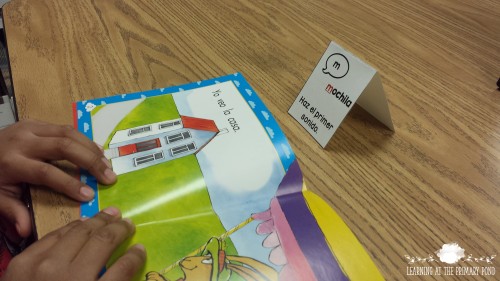
The nice thing about these cards is that you can select just a few strategies to place in front of the child. This is less overwhelming than having a ton of posters on the wall, or a menu of multiple strategies. Also, the cards are 3-D and easily visible to students while they are reading.
Will likes using the cards so far, and he’s been more actively self-monitoring his reading. Here are some other things I do with him to encourage him to actively self-monitor:
- I keep my eyes on the text while he is reading and avoid providing immediate feedback after he reads each word or sentence. This puts the responsibility on Will for figuring out if what he has read is correct or not.
- If Will pauses after making an error or finishing a sentence with errors, I wait for a couple of seconds. Then, I ask, “What are you thinking?” or “Why did you stop?” or “What did you notice?” I then coach him to verbally express what he noticed, find his own error, and fix it.
- When Will does not pause or notice that he’s made an error, I don’t always address it immediately. If it’s a minor error that won’t cause a break-down of comprehension, we can always return after the book is finished.
- Sometimes I do want to address an error immediately, however. If he doesn’t notice, I pause him after he’s finished the page. I say, “You read ________” and read back exactly what he said, pointing to each word. Then I say, “Was that correct?” or “Can you find the mistake?” I then encourage him to find and correct the error independently. If he can find the error (even if he can’t correct it independently), then that is an important step in the right direction.
If you’d like to try out the decoding strategy cards I created, just click on the image below. Both English and Spanish sets are included in the free download.
How do you get your beginning readers to self-monitor? Share your strategies below, and let me know if these prompting cards work for your students, too!

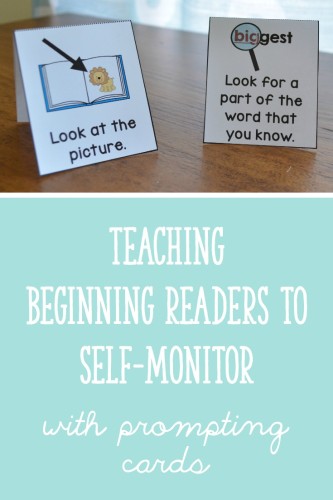
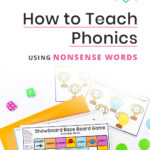
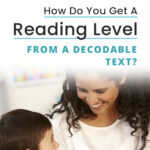
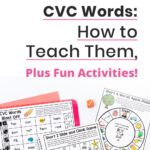
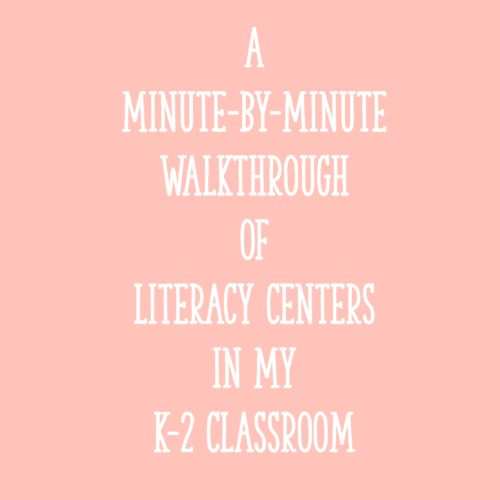
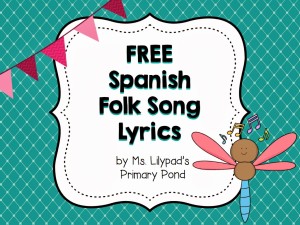
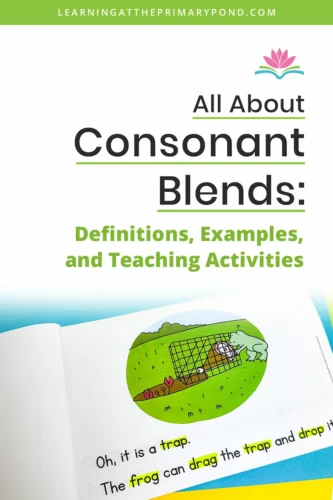






Oh my word- LOVE the idea of actually sticking just the little card right there in front of them as they read. Such an awesome idea to help my little readers actually just focus on one strategy! I’ve always used little bookmarks/a paper size version with all the strategies to reference, but I love the individuality with this freebie. Thanks a bunch!
P.S Story of my life with the kiddos saying “rock” instead of “stone” when doing the running records! 🙂
I’ve taught first grade reading for 16 years now. I help my students to self-monitor by sometimes asking questions when they have read CORRECTLY too. They get used to thinking there is something wrong if the teacher asks them about their reading so this gets them to really think and to realize when it DOES make sense, etc. I’ve seen great results with this method. I love these small strategy cards for individual use; thanks for sharing.
Hi Terri! I do this, too! Because they DO think that they’ve made a mistake when we question them only after errors. Great point, and I’m glad you like the strategy cards!!
Alison
Thanks for sharing the download, especially the Spanish. Mil gracias 🙂
Thank you so much for this resource. Our school has purchased a new reading program called Units of Study by Lucy Culkins and I really like how it allows students to be reflective in the respects of setting reading goals. This will help with their accountability seeing the goal as they read. Each child has a book bin (small trash can with handles) and I was hoping to make a goal sheet that helps them check in on what they have mastered and what they strengthen. If you have any suggestions I’d love to hear them. We tried a small… Read more »
Hi Keana! Would a small half-inch binder for each kiddo be an option? Might help things hold together better!
Alison